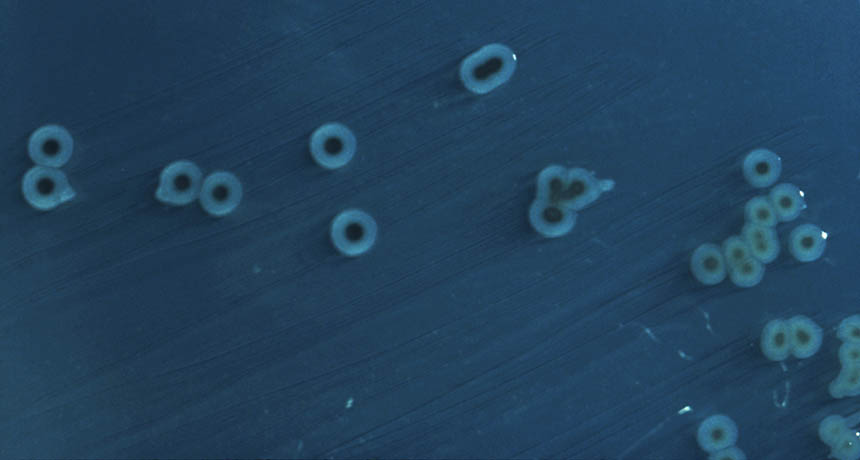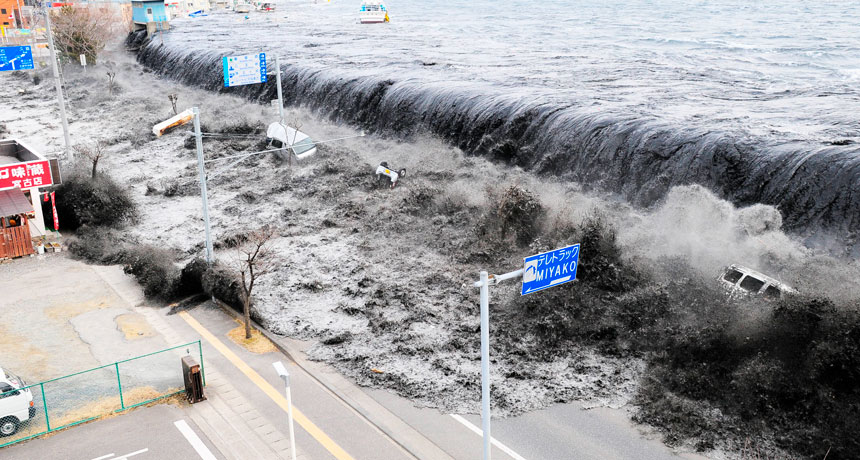In debate over origin of fairy circles, both sides might be right

Ecologists still don’t believe in fairies. But it may take magic to resolve a long-running debate over what causes the oddly regular spots of bare soil called fairy circles. A new approach now suggests combining the two main hypotheses.
Fairy circles, each among about six close neighbors, sprinkle arid grasslands in southern Africa and Australia “like a polka dot dress,” says ecologist Corina Tarnita of Princeton University. Two persistent ideas fuel debate over what’s making the arrays: stalemate warfare between underground termite colonies (SN Online: 3/28/13) or bigger plants monopolizing water (SN: 4/16/16, p. 8). “What if the reason that this debate is so long-lasting and it’s so hard to dismiss the other hypothesis is that both are right to a certain extent?” Tarnita asks.
Termites, by themselves, can in theory cause the mysterious arrangements, Tarnita, Princeton ecologist Robert Pringle and colleagues conclude from a new mathematical model they developed. They then linked their insect model with one showing plant competition causing fairy circles. The combined approach unexpectedly predicted a previously undescribed regular “clumping” pattern among the plants between fairy circles, the team reports January 18 in Nature.
In aerial pictures of fairy circles, the plants look like an even sea of vegetation between bare spots. To see if the plant patterns were real, the researchers visited the Namib Desert in southern Africa. Local park personnel “were constantly confused,” Tarnita says, because visitors usually study the bare patches. The vegetation clumped as predicted, in roughly hexagonal arrays as the circles themselves do. That confirmation suggests the combined model was working, the researchers say.
Hexagonal arrangements show up repeatedly in nature as creatures crowd together — for instance, as bees arrange cells in honeycombs, Pringle says. In southern Africa, termite colonies might create circular bare spots when insect nibbling prevents plant growth above the nest. Colonies too evenly matched to destroy each other persist as neighboring disks of barren soil, eventually packing into roughly hexagonal arrays.
But plants by themselves can make similar bare spots in harsh conditions, Tarnita explains. When a pioneer plant springs from dry, hot ground, for instance, opportunists follow, taking advantage of such benefits as the scrap of shade a pioneer casts. As these secondary plants grow bigger and suck up more of the limited water, they can create dead zones where nothing sprouts. Over time, these zones form hexagonal patterns, too.
Termites plus plants are probably producing the effect in the Namib Desert, Tarnita says. But the results might not apply to other fairy circle hot spots, such as Australia, she cautions. The main message of the new paper is that “different processes can lead to the exact same pattern,” she says.
Two proponents of the long-standing theories aren’t convinced the termite and plant models should be combined. Termite advocate Norbert Jürgens of the University of Hamburg welcomes the part of the new model that social insects alone “clearly” can cause fairy circles. But he’s not sure the plant clumping between circles indicates anything important. “Yes, of course there are always small-scale patterns among neighboring plants that are caused by feedback mechanisms,” he says. “However, these do not cause fairy circles.”
Nor does the new paper convert an ecologist advocating plant competition as the driver of fairy circle formation. Just showing that termites by themselves could create arrays with six neighbors isn’t enough, says Stephan Getzin of the Helmholtz Centre for Environmental Research GmbH-UFZ in Leipzig, Germany. “The degree of ordering or regularity that is shown by their insect model is not as strong as the ordering of [real-world] fairy circles,” he objects.
What’s needed now to resolve the debate isn’t necessarily fairy dust. Tarnita says she’s hoping for outdoor experiments.


